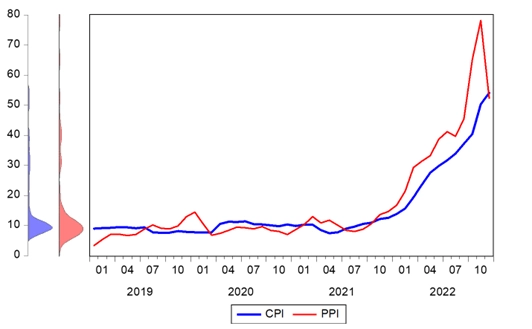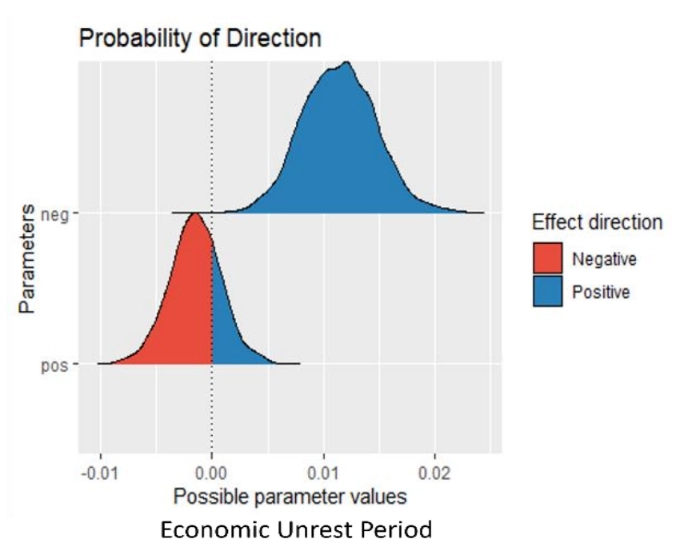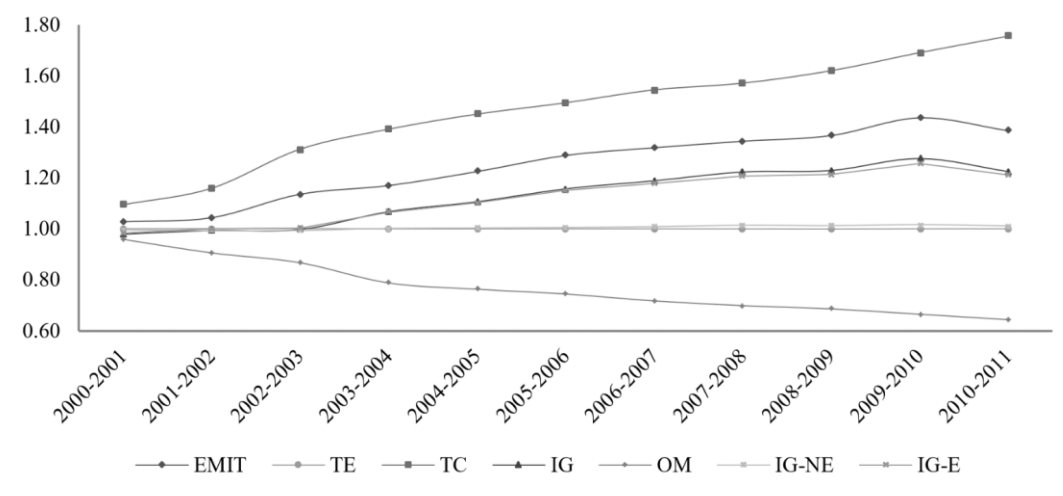Progress, Evolving Paradigms and Recent Trends in Economic Analysis
Abstract
This paper provides a thorough review of the shifting landscape of economic analysis, spotlighting recent trends and predicting future paths. While traditional economic models remain key for interpreting economic activity, they are being supplemented by fresh methods and cross-disciplinary viewpoints. The increased attention to inequality studies, using advanced statistical techniques and unique data sources, underscores the growing emphasis on fairness and distribution within economic analysis. The incorporation of behavioral elements into economic models also expands our comprehension of economic decision-making and market results. Notably, the emergence of computational economics-integrating artificial intelligence (AI), big data, and machine learning into economic scrutiny-represents a major development. Often referred to as ’smart economics,’ this field employs technology to formulate, address complex economic dilemmas, and perceive economic activity in unconventional ways. Yet, the application of AI and machine learning in economics introduces new hurdles around data privacy, algorithmic bias, and the transparency of model outcomes. The impact of the digital revolution on economic analysis is significant, as the advent of computational economics and the surge of big data are transforming research techniques and policy implications. Concurrently, the advent of the circular economy indicates a radical shift in our perspective on economic sustainability, carrying considerable implications for environmental policy and business tactics. In the future, it’s anticipated that these trends will further modify the realm of economic analysis, with AI and machine learning integration, emphasis on sustainability and fairness, and the influence of big data becoming more pronounced. As these changes take place, it’s imperative for researchers, policymakers, and practitioners to remain adaptable and flexible, prepared to capitalize on the opportunities and tackle the challenges these trends present.
Share and Cite
Article Metrics
References
- H. Varian. (2014). Big data: New tricks for econometrics. Journal of Economic Perspectives 28(2), 3–28. https://doi.org/10.1257/jep.28.2.3
- E. R. Weintraub. (2002). How Economics Became a Mathematical Science. Duke University Press. https://doi.org/10.2307/j.ctv125jtwm
- H. Varian. (2014). Intermediate Microeconomics: A Modern Approach. W. W. Norton & Company.
- S. Mullainathan and J. Spiess. (2014). Machine learning: An applied econometric approach. Journal of Economic Perspectives 31, 87–106. https://doi.org/10.1257/jep.31.2.87
- J. Gowdy and J. D. Erickson. (2008). Ecological Economics at a Crossroads. Edward Elgar Publishing.
- R. H. Thaler. (2015). Misbehaving: The Making of Behavioral Economics. W. W. Norton & Company.
- D. Kuiziniene˙, T. Krilaviˇcius, R. Damaˇseviˇcius, and R. Maskeliu¯nas. (2022). Systematic review of financial distress identification using artificial intelligence methods. Applied Artificial Intelligence 36(1). https://doi.org/10.1080/08839514.2022.2138124
- M. Geissdoerfer, P. Savaget, N. M. P. Bocken, and E. J. Hultink. (2017). The circular economy–a new sustainability paradigm? Journal of Cleaner Production 143, 757–768. https://doi.org/10.1016/j.jclepro.2016.12.048
- S. Makridakis. (2017). The forthcoming artificial intelligence (ai) revolution: Its impact on society and firms. Futures 90, 46–60. https://doi.org/10.1016/j.futures.2017.03.006
- J. Persky. (1995). Retrospectives: The ethology of homo economicus. Journal of Economic Perspectives 9, 221–231. https://doi.org/10.1257/jep.9.2.221
- J. E. Stiglitz, J. P. Fitoussi, and M. Durand. (2018). Beyond GDP: Measuring What Counts for Economic and Social Performance. OECD Publishing. https://doi.org/10.1787/9789264307292-en.
- D. Acemoglu and P. Restrepo. (2021). The Narrow Corridor: States, Societies, and the Fate of Liberty. Penguin Press.
- K. J. Arrow and G. Debreu. (1959). Existence of an equilibrium for a competitive economy. Econometrica. 22(3), 265–290. https://doi.org/10.2307/1907353
- S. Mullainathan and J. Spiess. (2017). Machine learning: An applied econometric approach. Journal of Economic Perspectives 31, 87–106. https://doi.org/10.1257/jep.31.2.87
- J. D. Farmer and D. Foley. (2019). The economy needs agent-based modelling. Nature 460, 685–686. https://doi.org/10.1038/460685a
- M. Dixon, K. Pantelis, and D. Chai. (2018). The application of machine learning techniques to forecasting: An empirical study in economics. Operations Research Perspectives 5, 94–102.
- J. Kleinberg, J. Ludwig, S. Mullainathan, and Z. Sunstein. (2018). Algorithmic fairness. AEA Papers and Proceedings 108, 22–27. https://doi.org/10.1257/pandp.20181018
- D. Acemoglu and P. Restrepo. (2019). Automation and new tasks: How technology displaces and reinstates labor. Journal of Economic Perspectives 33, 3–30. https://doi.org/10.1257/jep.33.2.3
- E. Brynjolfsson and A. McAfee. (2019). The second machine age: Work, progress, and prosperity in a time of brilliant technologies.
- O. Blanchard. (2017). Macroeconomics. Pearson.
- J. Wooldridge. (2015). Introductory Econometrics: A Modern Approach. South-Western Cengage Learning.
- S. DellaVigna. (2018). Structural behavioral economics. Handbook of Behavioral Economics-Foundations and Applications 1, 613–723.
- T. Tietenberg and L. Lewis. (2006). Environmental and Natural Resource Economics. Pearson Addison Wesley.
- L. Tesfatsion and K. L. Judd. (2006). Handbook of Computational Economics. Elsevier.
- S. Makridakis. (2017). The forthcoming artificial intelligence (ai) revolution: Its impact on society and firms. Futures 90, 46–60. https://doi.org/10.1016/j.futures.2017.03.006
- P. Treleaven, M. Galas, and V. Lalchand. (2013). Algorithmic trading review. Communications of the ACM 56(11), 76–85. https://doi.org/10.1145/2500117
- L. Einav and J. Levin. (2014). Economics in the age of big data. Science 346(6210). https://doi.org/10.1126/science.1243089
- F. Provost and T. Fawcett. (2013). Data Science for Business. O’Reilly Media.
- X. Wu, X. Zhu, G. Wu, and W. Ding. (2017). Data mining with big data. IEEE Transactions on Knowledge and Data Engineering 26(1), 97–107. https://doi.org/10.1109/TKDE.2013.109
- Y. Zhang and Y. Fu. (2021). Modeling the economic and economic impact of artificial intelligence data feature analysis. In Proceedings of the 5th International Conference on Electronics, Communication and Aerospace Technology, ICECA 2021, pages 1412–1415. https://doi.org/10.1109/ICECA52323.2021.9676067
- R. K. Behera, S. Das, S. K. Rath, S. Misra, and R. Damasevicius. (2020). Comparative study of real time machine learning models for stock prediction through streaming data. Journal of Universal Computer Science 26(9), 1128–1147. http://dx.doi.org/10.3897/jucs.2020.059
- A. M. Costello, A. K. Down, and M. N. Mehta. (2020). Machine+man: A field experiment on the role of discretion in augmenting ai-based lending models. Journal of Accounting and Economics 70(2-3). https://doi.org/10.1016/j.jacceco.2020.101360
- Saqib Aziz and Michael Dowling. (2018). Machine learning and AI for risk management. In Disrupting Finance, pages 33–50. Springer International Publishing. https://doi.org/10.1007/978-3-030-02330-0_3
- Geert Bekaert and Roberto A. (2021). De Santis. Risk and return in international corporate bond markets. Journal of International Financial Markets, Institutions and Money 72, 101338. https://doi.org/10.1016/j.intfin.2021.101338
- Ananth Madhavan, Stefano Pasquali, and Philip Sommer. (2022). How trading analytics and data science can improve investment outcomes. The Journal of Investing 32(1), 104–114. https://doi.org/10.3905/joi.2022.1.245
- M. Fatun and M. Pazour. (2021). Modelling the impact of artificial intelligence on the labour market in czechia. Central European Journal of Public Policy 15(2), 31–42. https://doi.org/10.2478/cejpp-2021-0006
- Y. Chang and N. Fan. (2023). A novel approach to market segmentation selection using artificial intelligence techniques. Journal of Supercomputing 79(2), 1235–1262. https://doi.org/10.1007/s11227-022-04666-2
- R. Gupta, T. Jain, A. Sinha, and V. Tanwar. (2023). Review on Customer Segmentation Methods Using Machine Learning, volume 982 of Lecture Notes in Electrical Engineering. https://doi.org/10.1007/978-981-19-8136-4_33
- G. Dounias and V. Vassiliadis. (2015). Algorithms and methods inspired from nature for solving supply chain and logistics optimization problems: A survey, pages 245–276. Research Methods: Concepts, Methodologies, Tools, and Applications. https://doi.org/10.4018/978-1-4666-7456-1.ch012
- Xinyu Liu. (2022). Demonstration of supply chain management in big data analysis from walmart, toyota, and amazon. BCP Business & Management 34, 1198–1203. https://doi.org/10.54691/bcpbm.v34i.3159
- E. Okewu, S. Misra, R. Maskeliunas, R. Dama¸sevi¸cius, and L. Fernandez-Sanz. (2017). Optimizing green computing awareness for environmental sustainability and economic security as a stochastic optimization problem. Sustainability 9(10). https://doi.org/10.3390/su9101857
- T. M. Adeyemi-Kayode, S. Misra, R. Maskeliunas, and R. Damasevicius. (2023). A bibliometric review of grid parity, energy transition and electricity cost research for sustainable devel- opment. Heliyon 9(5). https://doi.org/10.1016/j.heliyon.2023.e15532
- N. M. Kumar, M. A. Mohammed, K. H. Abdulkareem, R. Damasevicius, S. A. Mostafa, M. S. Maashi, and S. S. Chopra. (2021). Artificial intelligence-based solution for sorting covid related medical waste streams and supporting data-driven decisions for smart circular econ- omy practice. Process Safety and Environmental Protection 152, 482–494. https://doi.org/10.1016/j.psep.2021.06.026
- O. Emmanuel, M. Ananya, S. Misra, and M. Koyuncu. (2020). A deep neural network-based advisory framework for attainment of sustainable development goals 1-6. Sustainability 12(24), 1–16. https://doi.org/10.3390/su12166439
- O. Misra, E. Okewu, S. Misra, and L. Fern´andez-Sanz. (2022). Deep neural network model for evaluating and achieving the sustainable development goal 16. Applied Sciences 12(18).
- A. Bianchini, J. Rossi, and M. Pellegrini. (2019). Overcoming the main barriers of circular economy implementation through a new visualization tool for circular business models. Sustainability 11(23). https://doi.org/10.3390/su11236614
- K. Demestichas and E. Daskalakis. (2020). Information and communication technology solutions for the circular economy. Sustainability 12(18), 1–19. https://doi.org/10.3390/su12187272
- S. L. N. Alonso, R. F. R. Forradellas, O. P. Morell, and J. Jorge-Vazquez. (2021). Digitalization, circular economy and environmental sustainability: The application of artificial intelligence in the efficient self-management of waste. Sustainability 13(4), 1–20. https://doi.org/10.3390/SU13042092
- I. Deviatkin, S. Rousu, M. Ghoreishi, M. Naji Nassajfar, M. Horttanainen, and V. Leminen. (2022). Implementation of circular economy strategies within the electronics sector: Insights from finnish companies. Sustainability 14(6). https://doi.org/10.3390/su14063268
- X. Niu, S. Yu¨ksel, and H. Din¸cer. (2023). Emission strategy selection for the circular economybased production investments with the enhanced decision support system. Energy 274. https://doi.org/10.1016/j.energy.2023.127446
- J. Manyika, M. Chui, B. Brown, J. Bughin, R. Dobbs, C. Roxburgh, and A. H. Byers. (2011). Big data: The next frontier for innovation, competition, and productivity.
- C. O’Neil. (2016). Weapons of Math Destruction: How Big Data Increases Inequality and Threatens Democracy. Crown. https://doi.org/10.1080/15536548.2017.1357388
- S. Athey. (2018). The impact of machine learning on economics. The Economics of Artificial Intelligence: An Agenda 1, 507–547. https://doi.org/10.7208/chicago/9780226613475.003.0021
- T. Piketty. (2014). Capital in the Twenty-First Century. Harvard University Press. http://www.jstor.org/stable/j.ctt6wpqbc
- E. Okewu, S. Misra, J. Okewu, R. Damaˇseviˇcius, and R. Maskeliu¯nas. (2019). An intelligent advisory system to support managerial decisions for a social safety net. Administrative Sciences 9(3). https://doi.org/10.3390/admsci9030055
- T. Piketty. (2014). Capital in the Twenty-First Century. Harvard University Press. https://doi.org/10.4159/9780674369542-intro
- S. Kuznets. (1955). Economic growth and income inequality. American Economic Review 45, 1–28. http://www.jstor.org/stable/1811579
- E. Saez and T. Piketty. (2003). Income inequality in the united states, 1913-1998. Quarterly Journal of Economics 118, 1–39. https://doi.org/10.1162/00335530360535135
- R. Chetty, N. Hendren, P. Kline, and E. Saez. (2014). Where is the land of opportunity? the geog- raphy of intergenerational mobility in the united states. Quarterly Journal of Economics 129, 1553–1623. https://doi.org/10.1093/qje/qju022
- E. Saez and G. Zucman. (2016). Wealth Inequality in the United States since 1913: Evidence from Capitalized Income Tax Data. The Quarterly Journal of Economics 13, 519-578, https://doi.org/10.1093/qje/qjw004
- R. Chetty, J. N. Friedman, N. Hendren, M. R. Jones, and S. R. Porter. (2018). The opportunity atlas: Mapping the childhood roots of social mobility. NBER Working Paper Series, No. 25147.
- E. Okewu, S. Misra, L. Fernandez Sanz, F. Ayeni, V. Mbarika, and R. Damaˇseviˇcius. (2019). Deep neural networks for curbing climate change-induced farmers-herdsmen clashes in a sustainable social inclusion initiative. Problemy Ekorozwoju 14(2), 143–155.
- J. K. Boyce. (2019). Economics for People and the Planet: Inequality in the Era of Climate Change. Anthem Press.
- B. Milanovic. (2016). Global Inequality: A New Approach for the Age of Globalization. Harvard University Press.
- D. Silver, A. Huang, C. J. Maddison, A. Guez, L. Sifre, G. V. D. Driessche, J. Schrit- twieser, I. Antonoglou, V. Panneershelvam, M. Lanctot, S. Dieleman, D. Grewe, B. Nham, N. Kalchbrenner, I. Sutskever, T. Lillicrap, M. Leach, K. Kavukcuoglu, T. Graepel, and D. Hassabis. (2016). Mastering the game of go with deep neural networks and tree search. Nature 529, 484–489. https://doi.org/10.1038/nature16961
- D. Colander, R. Holt, and B. Rosser. (2010). The changing face of mainstream economics. Review of Political Economy 16, 485–499. https://doi.org/10.1080/0953825042000256702
- OECD. (2020). Inclusive growth.
- Okewu, S. Misra, L. F. Sanz, R. Maskeliu¯nas, and R. Damaˇseviˇcius. (2018). An e-environment system for socio-economic sustainability and national security. Problemy Ekorozwoju 13(1), 121–132.
- Xuefeng Guan, Jingbo Li, Changlan Yang, and Weiran Xing. (2023). Development process, quan- titative models, and future directions in driving analysis of urban expansion. ISPRS International Journal of Geo-Information. https://doi.org/10.3390/ijgi12040174
- Z. Temerbulatova, B. Mukhamediyev, and J. Gazda. (2022). Trends in income inequality and economic growth: a bibliometric analysis. Economic Science for Rural Development Conference Proceedings. https://doi.org/10.51176/1997-9967-2022-4-158-169
- Neama Derhab and Zakaria Elkhwesky. (2022). A systematic and critical review of waste man- agement in micro, small and medium-sized enterprises: future directions for theory and practice. Environmental Science and Pollution Research. https://doi.org/10.1007/s11356-022-24742-7
- Manish Raghavan, Solon Barocas, J. Kleinberg, and K. Levy. (2019). Mitigating bias in algorithmic hiring: evaluating claims and practices. In Proceedings of the 2020 Conference on Fairness, Accountability, and Transparency, pages 469–481. https://doi.org/10.1145/3351095.3372828
- Nguyen Cong Luong, D. Hoang, Ping Wang, D. Niyato, Dong In Kim, and Zhu Han. (2016). Data collection and wireless communication in internet of things (iot) using economic analysis and pricing models: A survey. IEEE Communications Surveys & Tutorials 18(4), 2541–2590. https://doi.org/10.1109/COMST.2016.2582841
- J. Abowd and Ian M. Schmutte. (2018). An economic analysis of privacy protection and statistical accuracy as social choices. American Economic Review 109(1), 171–202. https://doi.org/10.1257/aer.20170627
- Q. T. Pham, A. Pham-Nguyen, S. Misra, and R. Damaˇseviˇcius. (2020). Increasing innovative work- ing behaviour of information technology employees in vietnam by knowledge management approach. Computers 9(3), 1–12. https://doi.org/10.3390/computers9030061


